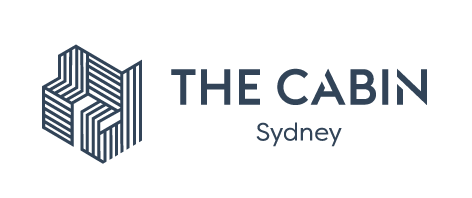Sam Lansky, the culture editor for Time magazine, has written a jolting memoir that paints a grim and vivid picture of the toll that substance abuse can take on a young life. We take a closer look at this tragic – yet beautifully written – account of teen addiction.

Sharelines
Sam Lansky’s rise to fame and success did not come without a price. The culture editor for Time magazine had a tumultuous start to his young adult life. Lansky is only 27 years old at this point, and he has achieved a great deal at this point in his life, becoming an editor and pop culture pundit for one of the best-known magazines in the world.
But as he reveals in his new memoir, The Gilded Razor (released in January 2016), this success did not come easily to him. Instead, Lansky had to overcome what many would have considered an unsurmountable teenage addiction. His memoir is a candid glimpse into the life of a person struggling with substance abuse. And as he demonstrates to readers, overcoming addiction is an act of sheer defiance that would not be possible without extraordinary will and conviction.
The Life of a Wealthy Teenage Addict in New York City
The story begins in high school, when Lansky attended a prestigious New York City prep school with the hopes of gaining admittance to Princeton University. His parents had divorced, and Lansky lived with his father in New York City’s Upper West Side.
Drugs had already surfaced as a problem for Lansky at this point. A surprise drug test arranged by his mother revealed that he had been taking cocaine at an early age. However, when his parents divorced, he moved in with his father and was essentially given free reign. According to his memoir, he was left to his own devices with a credit card and cash. This financed a high-risk lifestyle that nearly consumed him.
Throughout his prep school career, Lansky had a knack for finding people who could help fuel his growing teen addiction. One such person was ‘Sahara’ (all names were changed in the memoir), an Italian heiress who was still able to find cocaine even as the supply was tightening in New York City.
Lansky and Sahara would spend evenings out in the city, visiting other friends with a similar penchant for substance use. Many of their cohorts were teenagers in similar positions. They were wealthy, jaded and largely unsupervised. One scene is particularly telling, depicting a group of teenagers getting high and skinny dipping in a swimming pool lined with black marble. This was the world in which Lansky grew up.
The High-Risk Behaviour of Drug- and Alcohol-Addicted Adolescents
As mentioned, when Lansky moved to New York City to live with his parents, he routinely slipped out at night to take cocaine with his friends. He was also consuming excessive amounts of alcohol and becoming increasingly dependent on pharmaceuticals, including Ambien, Adderall, Xanax and Klonopin.
He was already leading a high-risk lifestyle at this stage in his life, and it only became worse. Openly gay from the age of 11, Lansky began hooking up with older men that he met online, as well as in bars and clubs. In his own words, the only two requirements that he had for a potential hook-up were that the man have a nice apartment and a supply of cocaine.
In this sense, his risky behaviours were a means of subsidising his lifestyle. One fed the other, to the extent that Lansky found himself addicted to multiple substances and subject to the risks associated with casual sex with multiple partners. He was locked in a spiral of drugs and promiscuity, with no apparent way out.
Attempts to Treat Substance Abuse in Teenagers
Lansky believed that admittance to Princeton would cure him of his penchant for poor life choices, but he was not accepted to the programme. Instead, he ended up in the hospital after overdosing on prescription drugs. Lansky’s father was likely uncertain of how to deal with a drug-addicted son. At this point, he intervened and sent Lansky to a wilderness-based rehab in Utah. Lansky had a brush with suicidal thoughts during the programme, but ultimately emerged clean and with a newfound goal of staying that way.
But Lansky did not have access to a aftercare programme to help him stick to his convictions. This is often a problem for teenagers suffering from addiction. He knew that he needed to break free from the cycle of substance abuse, but was not properly equipped to do so.
And as the memoir points out, he was at a precarious juncture in the life of a teen addict – too old for youth programmes, but not really old enough to identify with programmes designed for adults. Instead, he pressed on and enrolled at Vassar College.
At university, Lansky immediately networked his way into a group of fellow users. He regularly attended parties and prioritised sex and cocaine over everything else in his life. His increasingly reckless behaviour landed him in a drug rehab programme. This time, he was strongly encouraged to join an outpatient programme for continued treatment.
The Final Straw in the Life of a Drug-Addicted Young Man
Lansky was still a teenager at this point – a young man who had seen and experienced more unnecessary hardship than many endure in a lifetime. He professed that he wanted to stay clean, but the lifestyle was beyond difficult to walk away from.
The foray that followed was predictably devastating. The list of drugs he consumed broadened considerably, and Lansky began working as a paid escort. Methamphetamines became part of his repertoire, and the crack pipe that he carried around with him became a potent symbol for the direction his life had taken.
The grim details of Lansky’s memoir are harrowing, to say the least. This book is a page-turner in the most perverse sense – as readers are compelled to see what else a young man with such potential could do to derail his life and opportunities. Indeed, if the reader did not know that Lansky was ultimately able to turn his back on addiction, the memoir could be altogether too difficult to finish.
But instead, The Gilded Razor is a tale of hope and redemption – a testament to the fact that no life of addiction is so powerful that it cannot be overcome. If you or someone you know is faced with the perils of teen addiction, please know that there is a way to move forward. Contact The Cabin Sydney to find out how.




